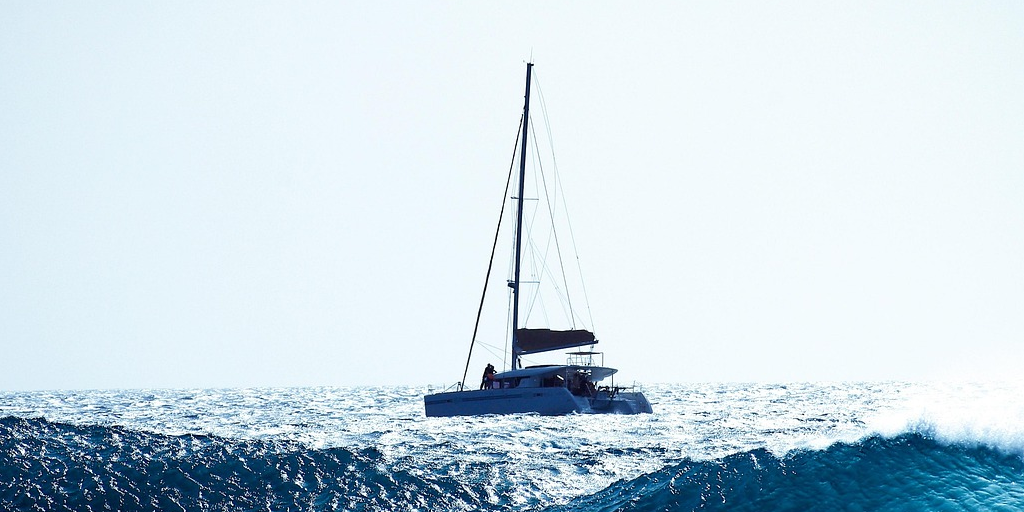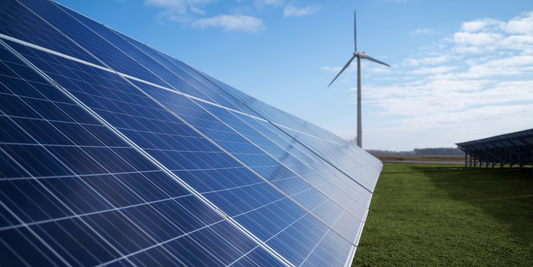
Secure the Power of Marine Vessels
Share
Marine vessels—from leisure yachts and commercial ships to offshore platforms—depend on robust and reliable power systems to operate safely and efficiently. Ensuring uninterrupted and secure power is critical not only for routine operations but also for emergency situations at sea. This guide provides an in-depth exploration of best practices, technologies, and strategies to secure the power supply for marine vessels. It covers everything from understanding power requirements to implementing advanced monitoring systems, integrating renewable energy, and performing regular maintenance. The following sections will walk you through the key components and practical guidelines for designing, operating, and maintaining a secure marine power system.
1. Understanding Marine Vessel Power Requirements
Before diving into the methods for securing power, it is essential to understand the power requirements of marine vessels. The power system on board a vessel is complex and comprises various components that ensure energy is delivered to propulsion, navigation, communication, and auxiliary systems reliably.
Primary Power Sources
- Diesel Generators: Many vessels rely on diesel generators to produce electricity, which is particularly common in larger ships and offshore platforms.
- Grid Connection: Some vessels, such as ferries or coastal service boats, may connect to shore power while docked.
- Renewable Energy Systems: Increasingly, marine vessels are integrating renewable sources like solar panels and wind turbines to supplement conventional power sources and improve sustainability.
Backup and Redundant Systems
- Uninterruptible Power Supply (UPS): Critical systems often require a UPS to provide immediate backup power during a transition from the primary power source to an alternative.
- Battery Banks: Batteries store energy for emergency use and are vital for bridging the gap during short-term outages.
- Hybrid Systems: Combining generators, batteries, and renewable sources provides redundancy and ensures continuous power even in adverse conditions.
Understanding these power sources and their interplay is the first step in designing a secure power system for marine vessels.
2. Challenges in Securing Marine Vessel Power
Marine environments are notoriously harsh. Saltwater, high humidity, temperature extremes, and constant vibrations can negatively impact the performance and longevity of power systems. Here are some common challenges faced by marine power systems:
Environmental Factors
- Corrosion: Saltwater and high humidity accelerate corrosion in electrical connections, wiring, and power equipment.
- Temperature Extremes: Both high and low temperatures can reduce battery efficiency and affect the performance of electronic components.
- Vibration and Shock: Constant movement and vibration can loosen connections and damage sensitive equipment.
Operational Challenges
- Load Fluctuations: Power consumption on vessels can vary significantly based on operational conditions. Managing these fluctuations without compromising performance is critical.
- Isolation and Redundancy: Ensuring that a single point of failure does not jeopardize the entire power system is paramount. This means incorporating redundancy and fail-safe measures.
- Remote Locations: Vessels operating far from shore may face difficulties with maintenance and quick repairs, increasing the importance of reliable power systems.
Addressing these challenges requires a well-designed power system coupled with proactive maintenance and advanced monitoring solutions.
3. Key Components of a Secure Marine Power System
A secure marine power system integrates multiple components that work together to ensure reliability and safety. The following elements are essential:
Power Generation and Conversion Equipment
- Diesel Generators and Inverters: Generators produce the primary power, while inverters convert DC power from batteries or renewable sources into AC power for onboard systems.
- Solar Panels and Wind Turbines: These renewable sources not only reduce fuel consumption but also provide an environmentally friendly supplement to traditional power sources.
- Hybrid Energy Systems: Combining multiple energy sources minimizes dependency on a single source and ensures greater resilience.
Energy Storage Solutions
- Battery Banks: Battery technologies such as flooded lead-acid, AGM (Absorbed Glass Mat), and lithium-ion are widely used in marine applications. Each has its benefits and trade-offs regarding maintenance, energy density, and cost.
- Uninterruptible Power Supply (UPS): A UPS system acts as a buffer during power transitions, ensuring that critical equipment is not affected by sudden power losses.
Control and Monitoring Systems
- Battery Management Systems (BMS): A BMS such as leagend UPS battery management solution monitors battery health, manages charge cycles, and provides data on voltage, current, and temperature. It prevents overcharging and deep discharge, thus extending battery life.
- Remote Monitoring and SCADA Systems: Supervisory Control and Data Acquisition (SCADA) systems, along with IoT-based remote monitoring, allow operators to track real-time performance and quickly respond to issues.
- Load Management Controllers: These systems help balance energy distribution across different systems on board, ensuring that no single component is overloaded.
Safety and Redundancy Measures
- Redundant Power Supplies: N+1 redundancy (having at least one extra power module beyond what is necessary) ensures continuous power even if one component fails.
- Environmental Enclosures: Protective housings and climate-controlled compartments shield power systems from corrosive environments and temperature extremes.
- Surge Protectors and Voltage Regulators: These devices mitigate the effects of power fluctuations and protect sensitive electronic equipment from damage.
4. Best Practices for Securing Marine Vessel Power
Implementing a secure power system for marine vessels involves adopting best practices during design, installation, and operational phases. Here are key strategies to consider:
System Design and Planning
- Comprehensive Load Analysis: Accurately calculate the total power consumption of all onboard systems and plan for peak loads and emergency scenarios.
- Redundancy Planning: Design the system with redundancy in mind. Use multiple power sources and storage systems to ensure that failure in one area does not compromise overall functionality.
- Future Scalability: Plan for future expansion. As energy demands evolve, the power system should be scalable without requiring a complete overhaul.
Installation Guidelines
- Proper Sizing and Siting: Ensure that generators, battery banks, and renewable installations are properly sized for the vessel’s power requirements and are installed in locations that minimize environmental exposure.
- Secure Mounting and Cabling: Use marine-grade materials for cabling and secure mounting solutions to protect against vibration, shock, and corrosion.
- Environmental Controls: Incorporate HVAC systems or climate-controlled enclosures to maintain optimal operating conditions for sensitive equipment like batteries and electronics.
Operational Strategies
- Regular Inspections and Preventive Maintenance: Establish a schedule for routine inspections to check for signs of corrosion, loose connections, or wear and tear. Preventive maintenance minimizes the risk of unexpected failures.
- Load Management: Implement systems that monitor and manage power distribution to avoid overloading any single component. This includes balancing the load between generators, batteries, and renewable sources.
- Training and Documentation: Ensure that crew members and maintenance personnel are trained in the operation and troubleshooting of the power system. Detailed documentation and maintenance logs are essential for tracking performance and planning repairs.
Advanced Monitoring and Diagnostics
- Real-Time Monitoring Systems: Invest in remote monitoring solutions such as leagend UPS battery management solution that provide real-time data on power generation, consumption, and storage status. This enables proactive management and quick response to anomalies.
- Predictive Analytics: Utilize software that leverages historical data and AI algorithms to predict potential failures and optimize maintenance schedules.
- Integration with Central Control: For fleets or larger vessels, integrate power system monitoring with centralized control centers to allow for coordinated response and management across multiple assets.
5. Maintenance and Troubleshooting
Securing marine power is not a one-time task but an ongoing process. Effective maintenance and troubleshooting practices are critical to sustaining system performance and reliability.
Regular Maintenance Routines
- Battery Care: For battery systems, perform regular checks on electrolyte levels (for flooded types), clean terminals, and verify the functionality of the Battery Management System. Replace aging cells as needed.
- Generator and Inverter Maintenance: Regularly service generators and inverters according to manufacturer guidelines, including oil changes, filter replacements, and performance testing.
- Environmental Checks: Ensure that enclosures remain sealed and that HVAC systems are functioning properly to maintain optimal temperature and humidity levels.
Troubleshooting Procedures
- Diagnostic Testing: Use diagnostic tools to test voltage, current, and resistance in various components of the power system. Identify issues like voltage drops or irregular power output.
- Fault Isolation: When issues arise, isolate different sections of the power system to determine the root cause. This can involve disconnecting specific battery strings or testing individual components.
- Professional Inspections: In cases where internal expertise is lacking, schedule inspections by professionals who specialize in marine power systems to ensure comprehensive evaluations and timely repairs.
6. Integrating Renewable Energy into Marine Power Systems
One of the most exciting trends in marine power is the integration of renewable energy sources. These not only enhance energy security but also contribute to environmental sustainability.
Solar Energy
- Solar Panels: Install marine-grade solar panels on deck or in other suitable locations. Solar energy can charge batteries and reduce reliance on diesel generators.
- Charge Controllers: Use smart charge controllers to manage the flow of energy from solar panels to batteries, ensuring efficient charging while protecting the batteries from overcharging.
Wind Energy
- Marine Wind Turbines: Small-scale wind turbines can be installed on vessels to generate supplementary power, especially useful during long voyages.
- Hybrid Systems: Combining wind and solar allows vessels to capitalize on varying weather conditions, ensuring a more consistent energy supply.
Energy Storage and Management
- Hybrid Battery Systems: Integrate renewable energy sources with existing battery systems to create hybrid setups that maximize energy efficiency.
- Intelligent BMS Integration: Advanced Battery Management Systems can optimize the charging and discharging cycles based on the input from renewable sources, ensuring balanced energy use and prolonging battery life.
7. Recommended Battery Management System for Marine Vessels
leagend UPS battery management solution is highly recommended for marine vessel battery monitoring and management:
Comprehensive Monitoring: leagend UPS battery management solution offers real-time and highly precise data monitoring for the battery key parameters such as voltage, current, internal resistance and temperature via its data collection module;
Visualized Data: leagend UPS battery management solution offers an all-in-one computer and management platform to display visualized and graphical data, which helps our customers know and understand the battery SoH easily at a glance;
Cloud Storage: The monitored data can be transferred to a specified cloud server via its control module to realize global deployment and data checking at any time;
Highly Tailored Service: As a solution provider, we are pleased to offer highly tailored products and services for our customers based on their demands to meet their different demands for different data center scenarios;

Securing the power of marine vessels is a multi-dimensional challenge that requires a thoughtful approach combining robust system design, redundancy, advanced monitoring, and proactive maintenance. With reliable power systems, vessels can ensure uninterrupted operations, protect critical equipment, and enhance overall safety in harsh marine environments.
By adopting best practices—from comprehensive load analysis and redundant system design to integrating renewable energy sources and utilizing advanced monitoring tools—operators can create secure, resilient, and sustainable marine power systems. Routine maintenance, coupled with predictive analytics and remote diagnostics, further bolsters the system’s reliability, ensuring that power interruptions are minimized and operational efficiency is maximized.
As technology evolves, the integration of IoT, AI, and next-generation battery solutions promises to further revolutionize marine power security. These innovations will not only reduce maintenance costs and extend system lifespans but also pave the way for a greener and more efficient maritime industry.
In an era where safety and reliability are paramount, securing the power of marine vessels is not merely a technical requirement—it is a strategic imperative that underpins every voyage. With a comprehensive understanding of marine power requirements and by following the guidelines outlined in this article, vessel operators can ensure that their power systems are robust, adaptable, and ready to meet the challenges of tomorrow.
By investing in secure and advanced marine power solutions, operators are not only safeguarding their assets but also contributing to a sustainable and resilient maritime future. Through proper design, implementation, and continuous monitoring, the power systems of marine vessels can be transformed into a dependable backbone that keeps vessels operational, safe, and efficient under all conditions.







